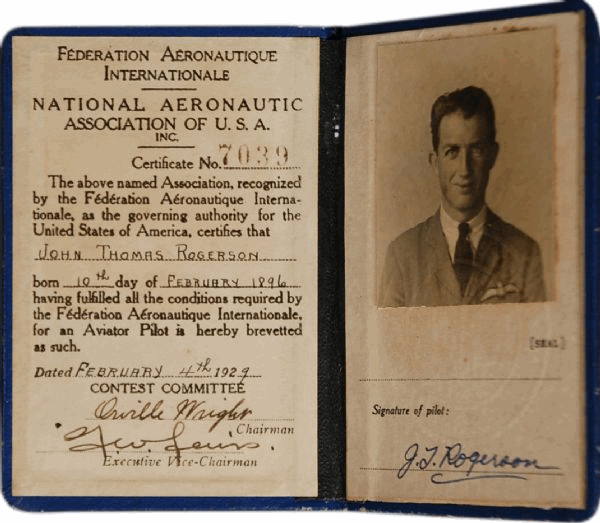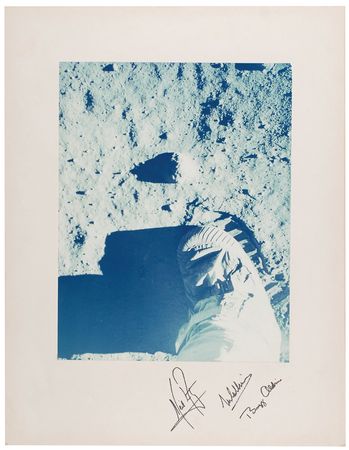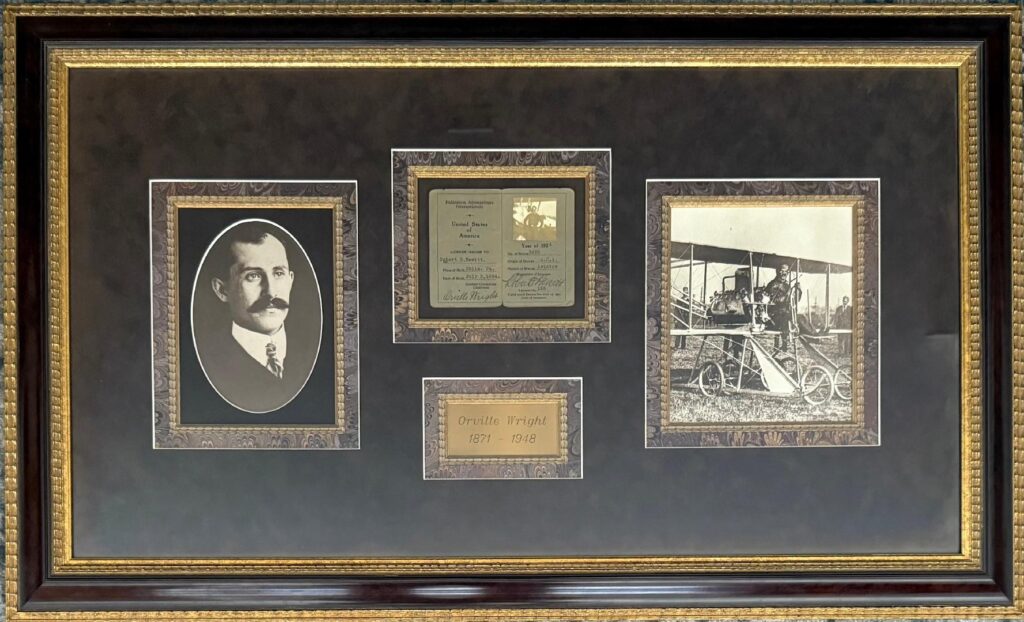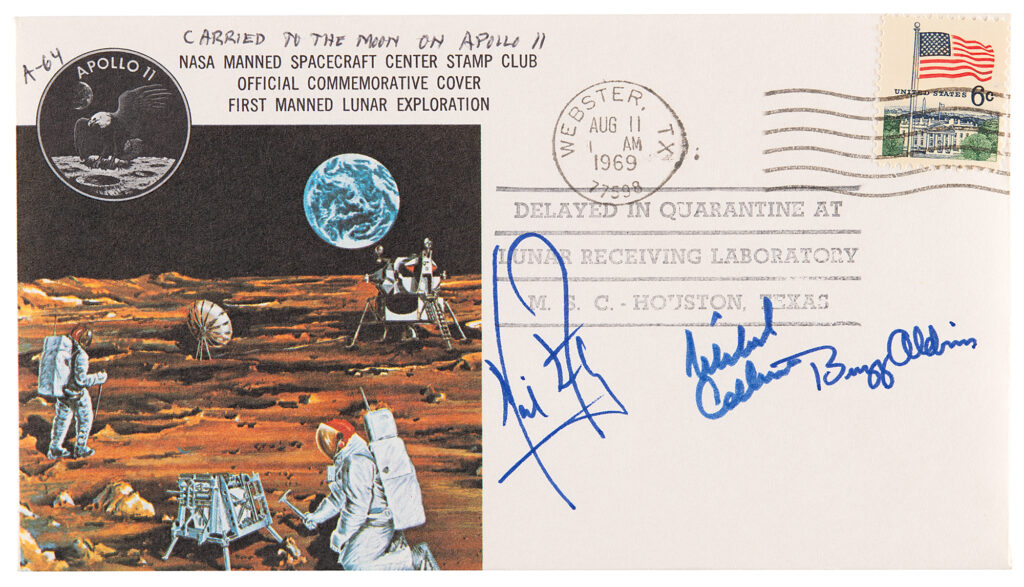ORVILLE WRIGHT: SIGNED EARLY AVIATOR’S CERTIFICATE ISSUED BY THE NATIONAL AERONAUTIC ASSOCIATION OF THE UNITED STATES
Leatherbound Pilot’s license, four pages, 3 x 4.25, being Certificate no. 7039, for John Thomas Rogerson, signed by “Orville Wright” as Chairman of the Federation Aeronautique Internationale, National Aeronautic Association of U.S.A. Wright’s signature is on the first page, and the photo and signature of Rogerson are alongside on page 2. Pages three and four of the certificate contain a request, printed in various languages, for assistance to the holder of the certificate. Capt. Rogerson flew for Glenn Curtiss in Hammondsport and Florida and was one of the first half-dozen pilots in Pan American Airways when the company was formed. During World War II, he flew with the Air Transport Command. Rogerson had the first mid Atlantic survey flight for Pan American Airways from Miami to Morrocco. Early in World War I, he went to England and became the flying instructor for an air squadron. There, his commanding officer was Britain’s most famous ace, Billy Bishop who downed Germany’s celebrated “Black Ace” the daring pilot, Baron Von Richtoven.
This early aviator’s license measures 3 x 4.5″, has blue wrappers and cardboard pages, and was issued by the NAA with the approval of the FAI. It is one of the earliest pilot’s licenses issued by the NAA, and is signed in black ink “Orville Wright” as Chairman of the Contest Committee. It includes Rogerson’s signature and photograph. The license also contains the following statement printed in six languages: “The Civil, Naval and Military Authorities, including the Police, are respectfully requested to aid and assist the holder of this Certificate.” The license bears remarkably preserved covers; interior leaves are barely age toned.
At the turn of the century, a small group of influential people formed the Aero Club of America. Its successor, The National Aeronautic Association (NAA), was incorporated in 1922 and kept all U.S. flying records and issued all U.S. pilot licenses from 1905 until the Civil Aeronautics Act of 1926. The NAA, in turn, was a member of the Fédération Aéronautique Internationale (FAI), the international standard-setting and record-keeping body for aeronautics and astronautics. This early license bearing Wright’s clear, sharp signature, is a true rarity! The license is in fabulous condition.




